HOME » NEWS » Trends » Sustainable Smart Tourism Practices Without Greenwashing
Sustainable smart tourism practices without greenwashing

Sustainable tourism development is definitely a powerful trend on today’s agenda because tourism is one of the largest industries in the world and according to some sources is responsible for 8% of carbon emissions and excessive consumption of various resources such as paper, water, food.
Naturally, many issues of sustainable development are within the competence of states, however, all participants in tourism processes, both ordinary tourists and tourism enterprises, can do a lot to change their behavior. In particular, to make wider use of digital smart tourism technologies that help achieve the SDGs.
At the same time, formalism and greenwashing should be avoided, when instead of specific and tangible deeds, general goals of sustainable development are declared without practical benefit.
Below we have given the simplest practices of applying digital technologies, which any tourist or tourism business can repeat. These practices have real benefits and, if widely implemented, will make tourism cleaner, smarter and more sustainable.
Paperless tourism
Our initiative calls to abandon paper both in tour businesses and among tourists with the help of digital smart tourism technologies. More about this initiative.
Here are examples of what everyone can do in their place:
- Use an electronic calendar instead of a paper diary. More.
- Use electronic maps instead of paper maps. More.
- Do not buy or publish paper catalogs and guides, but use electronic copies or even electronic talking guides, such as izi.TRAVEL. More.
- Don’t print or order business cards, use Linkedin to build and maintain business contacts.
- Do not order or distribute advertising brochures, but place predominantly digital advertising on the website, in social networks, etc.
Sustainable placements

Many online travel agencies (OTA) have begun to use digital technologies to help tourists find the most sustainable accommodation. For example, Booking.com has a separate filter that allows you to search for the right hotel based on its work towards sustainable development.

In addition, there are several levels of sustainability and any tourist can choose a consciously more sustainable hotel:

It is always possible and necessary to study in detail what exactly this or that hotel does in the direction of sustainability:
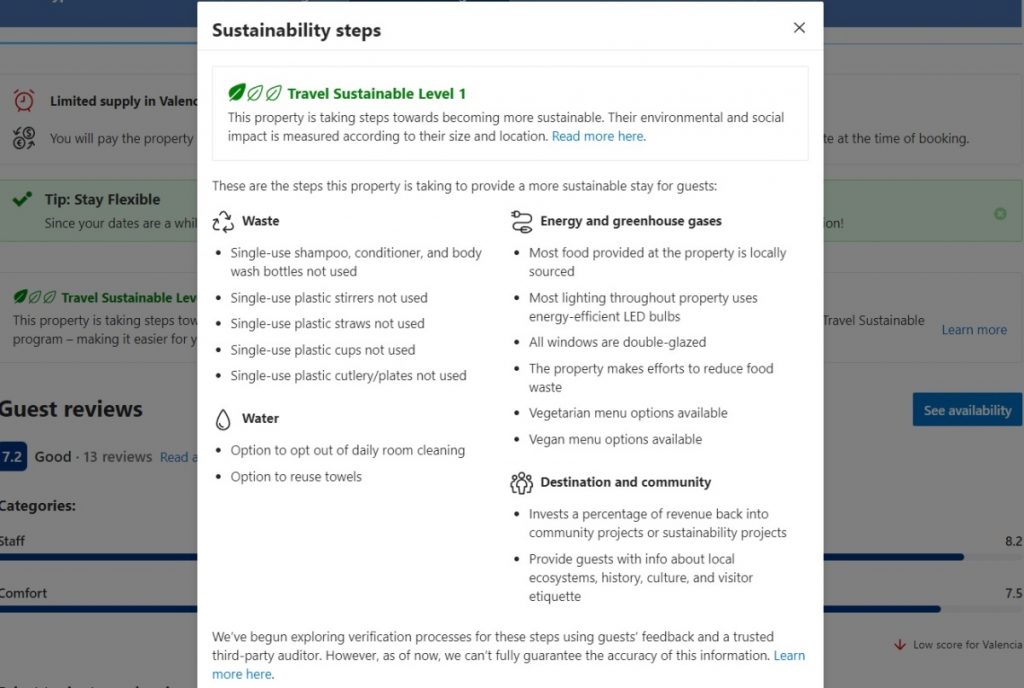
Using modern search and booking technologies, tourists are encouraged to choose more sustainable hotels, and hotels to increase their level of sustainability.
Choice of sustainable transport

When searching for an air ticket, search and booking technologies, as a rule, now indicate the carbon footprint of a given air flight and each traveler can choose a route with a minimal carbon footprint, for example in Google search:
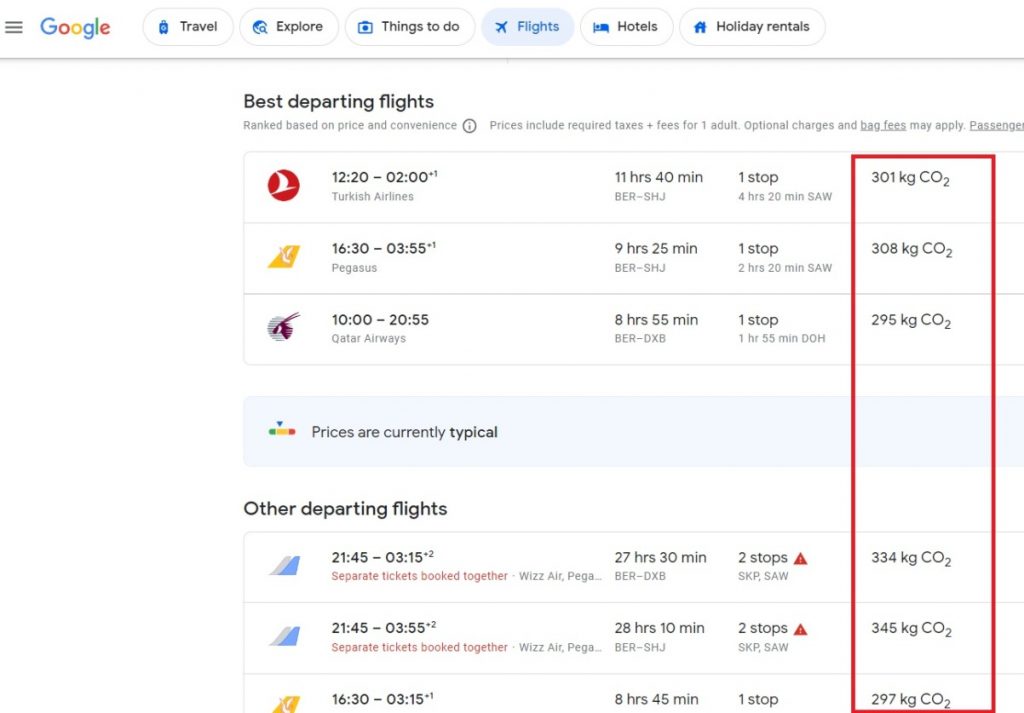
At the same time, it is known that land transport produces less environmental pollution. Therefore, when searching for an air flight, the systems suggest that there are alternative land routes. For example, in a Google search, alternative suggestions are displayed:
Digital Information and Campaigning
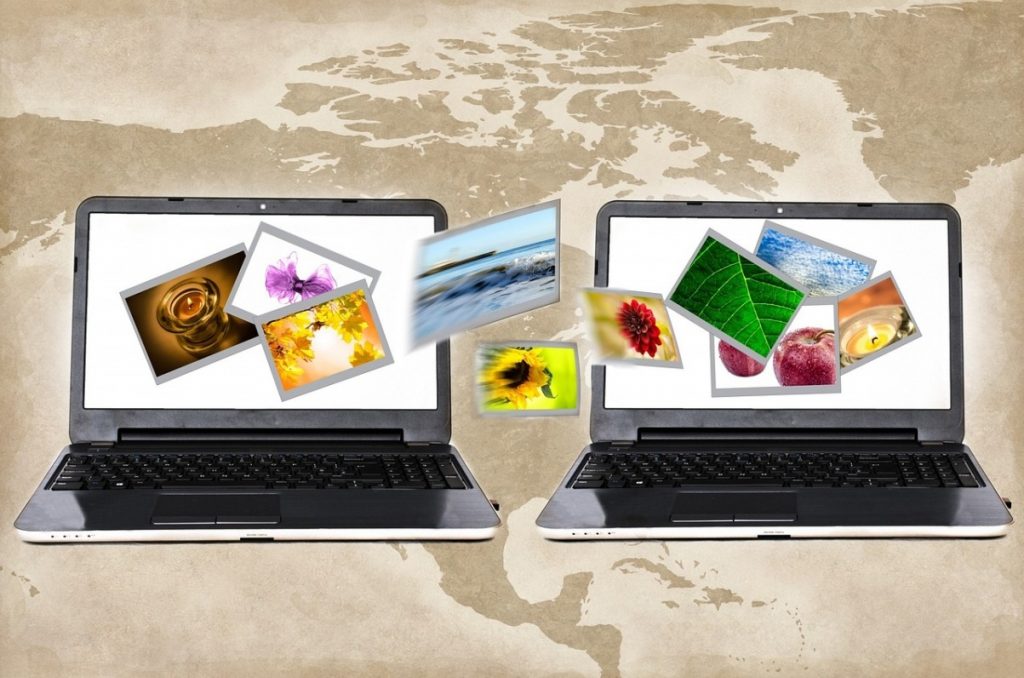
Of course, it is important for both tourists and tourism organizations to take part in various activities related to the environment, but it is equally important to spread the word about it in order to inspire other travelers to travel more sustainably, and encourage businesses to carry out such actions.
Digital technologies help in this, making it possible to bring information to millions or even billions of users around the Earth, but for this, participants in the action must share such content widely.
In social networks
Tourists can talk on social media about their sustainable travel practices. After all, in fact, nowadays any person is a user of one or another social network, and if every tenth of the 3 billion FB users or 2 billion Instagram users shares their personal experience in sustainable tourism, then the effect in convincing people of sustainable travel will be huge and immeasurable.
On Instagram, you can post a link to a photo or video with a story about the actio

On Facebook, you can also post a selection of photos, videos and a story about the action:

You can also share photos of the action on Twitter:
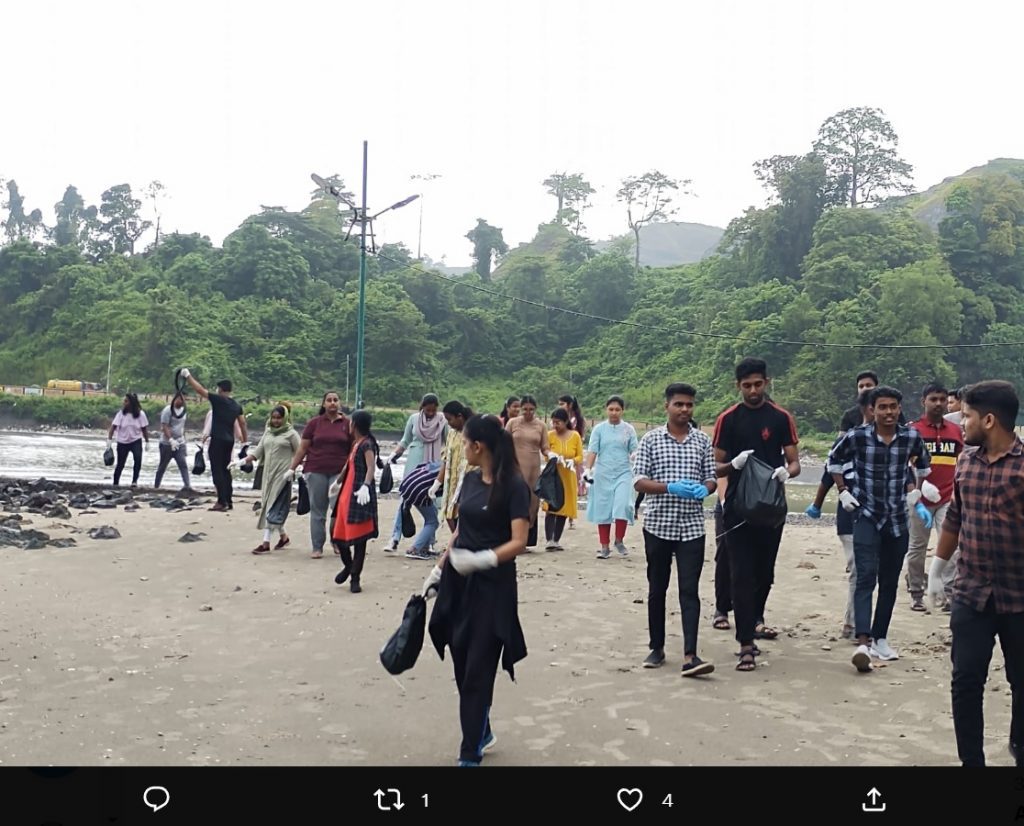
It is worth noting that such posts differ from others in greater public loyalty and, as a rule, collect more attention and engagement and therefore increase the overall reach.
On the websites of tourist organizations
In addition to social networks, tourism businesses have a powerful information resource and information dissemination technology in the form of websites through which they can agitate the tourism world for more sustainable development.
Here is an example of such content:

Many hotels post sustainability policies on their websites, which shows at the very least that they are serious about sustainability:
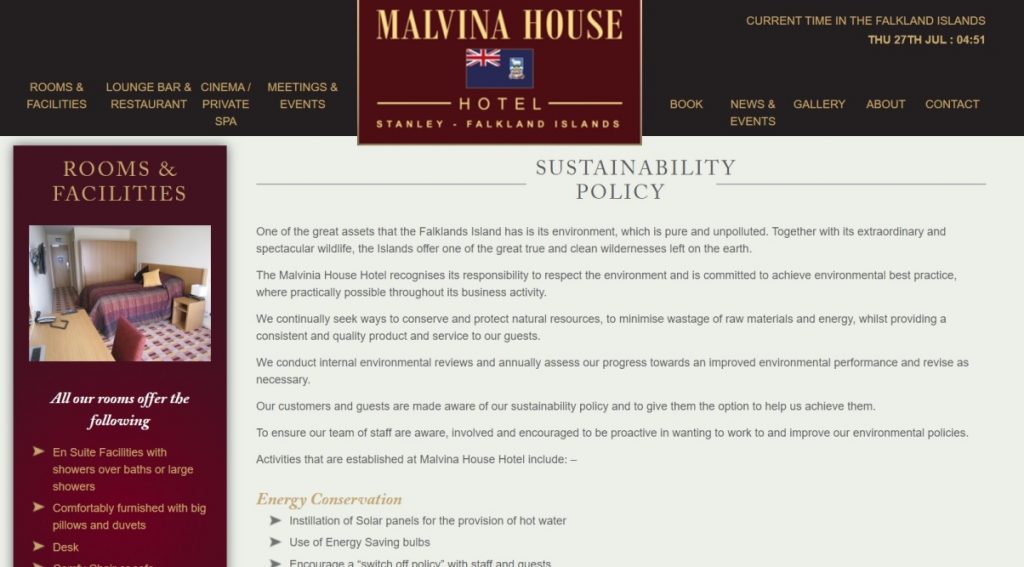
Hotels and hotel chains already have blogs or even separate sections of websites dedicated to sustainable development and achieving the SDGs:
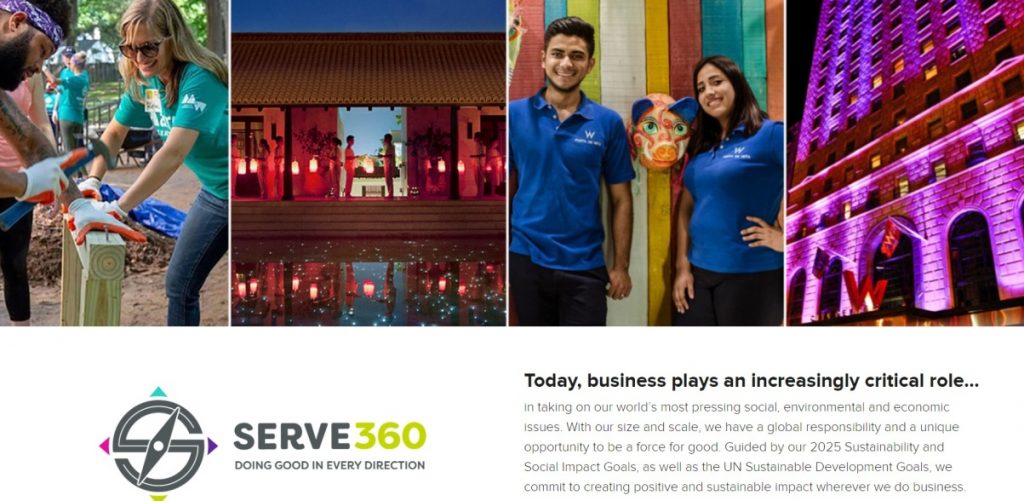
Conclusions:
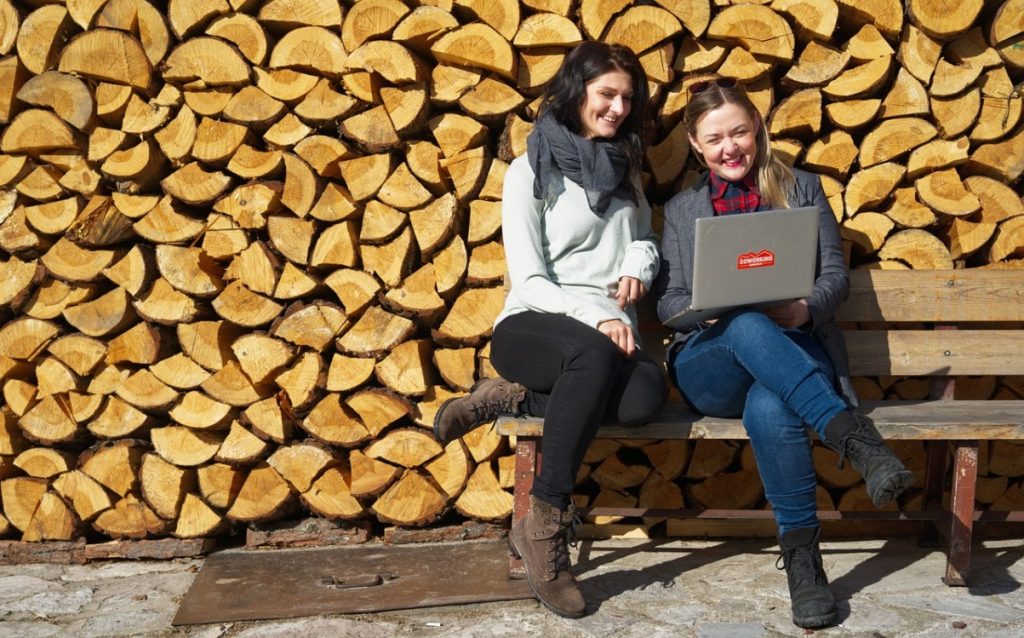
It must be understood that the dissemination of information through modern information and communication technologies can inspire travelers to travel more responsibly and sustainably. This often does not require special funds or efforts, it is enough just to share the content on your information resources.
We have presented only a small part of the possible application of digital technologies for the growth of sustainable and smart tourism. Although the contribution of each tourist or tourism organization to the conservation and sustainability of tourism may be very small, such a contribution, multiplied by billions of tourists and millions of tourism businesses, will have a huge multiplier effect and help achieve the SDGs in world tourism.
Author: Dmitriy Tin – founder of Center Smart Tourism GmbH
Editing and translation into English: Leonid Andrianov